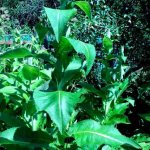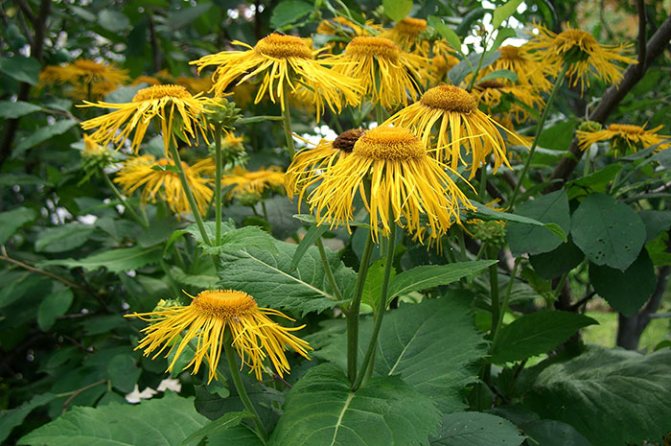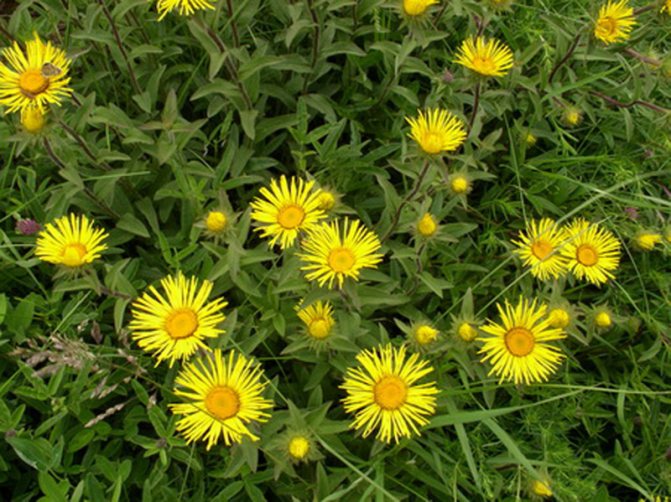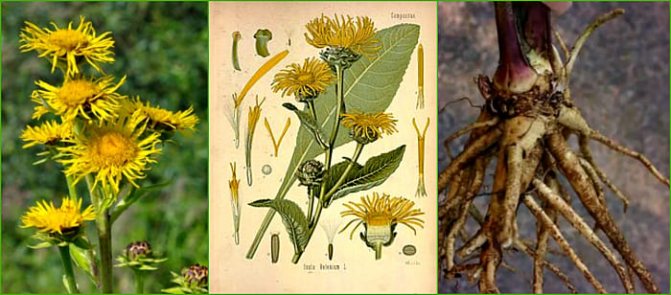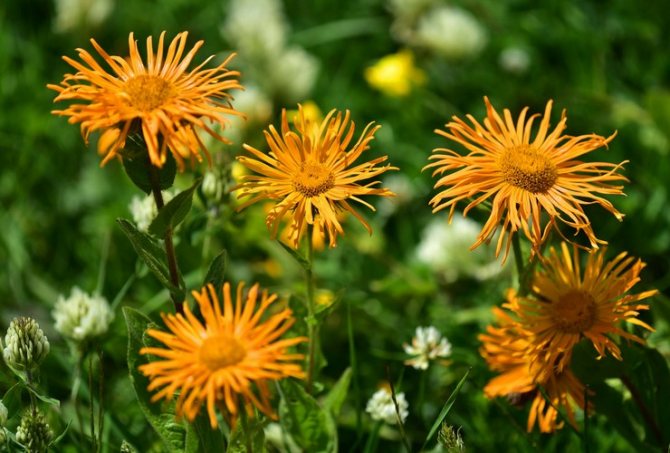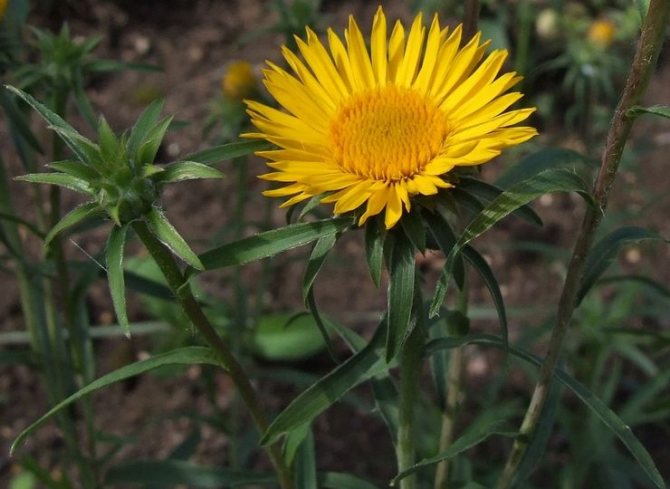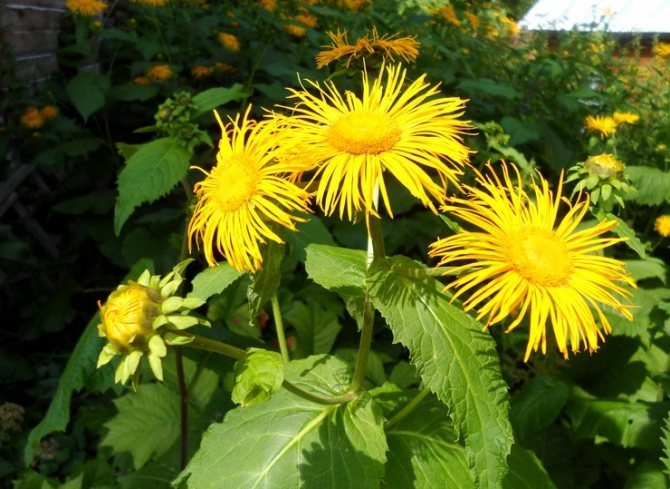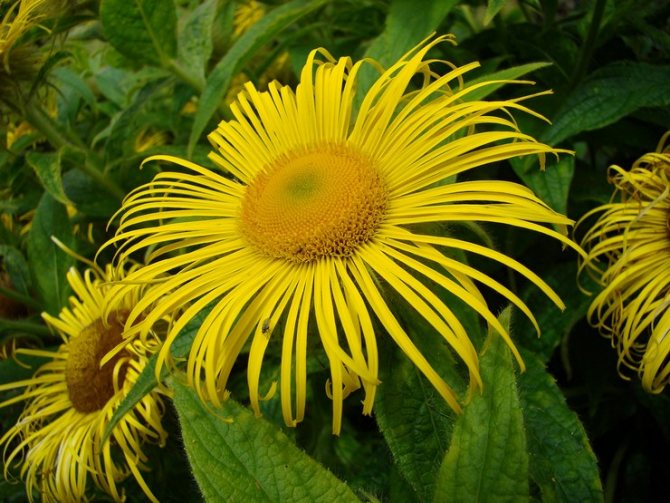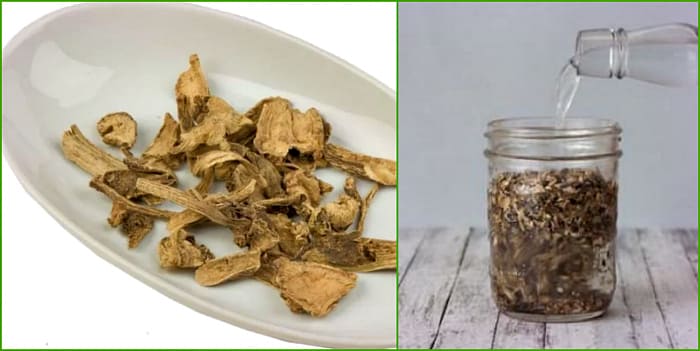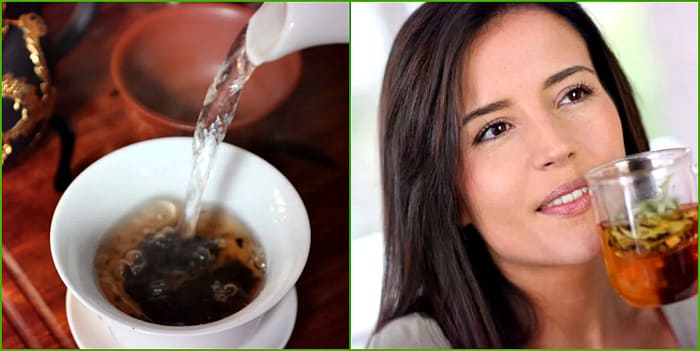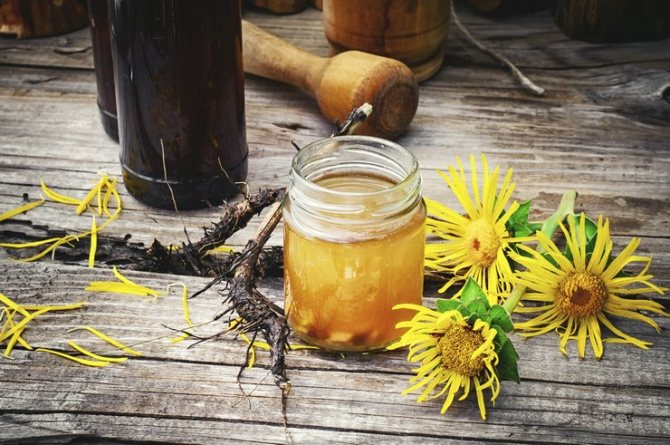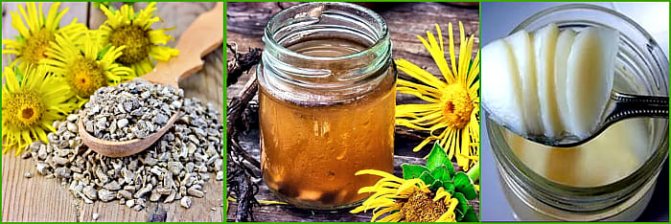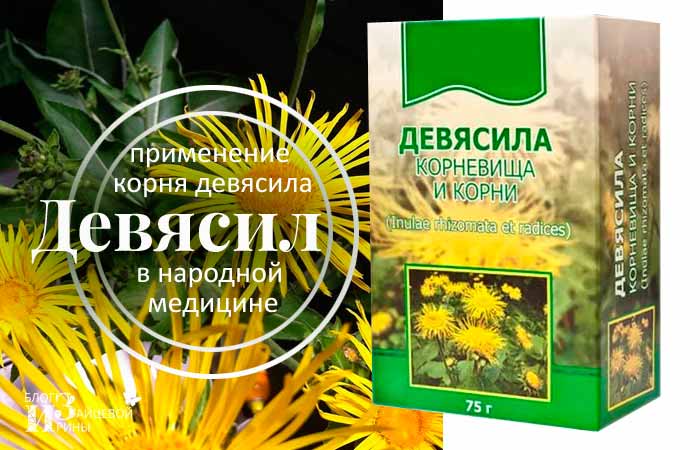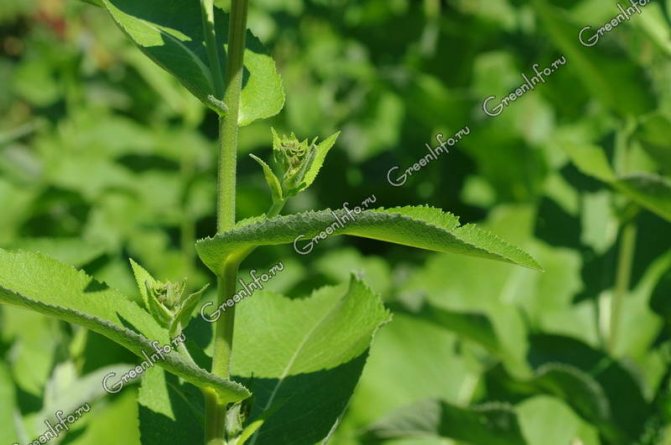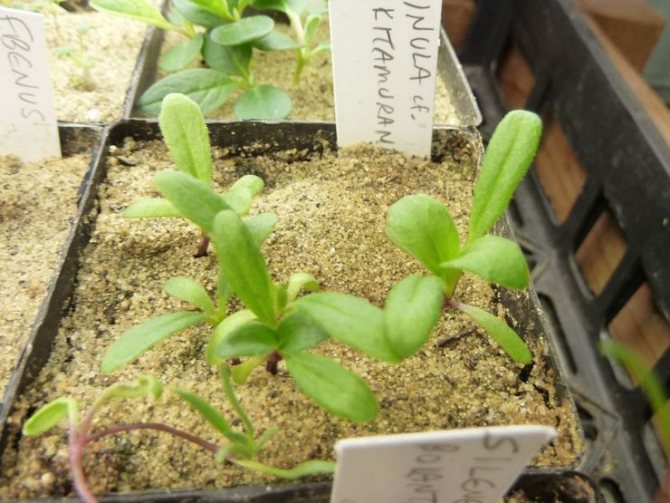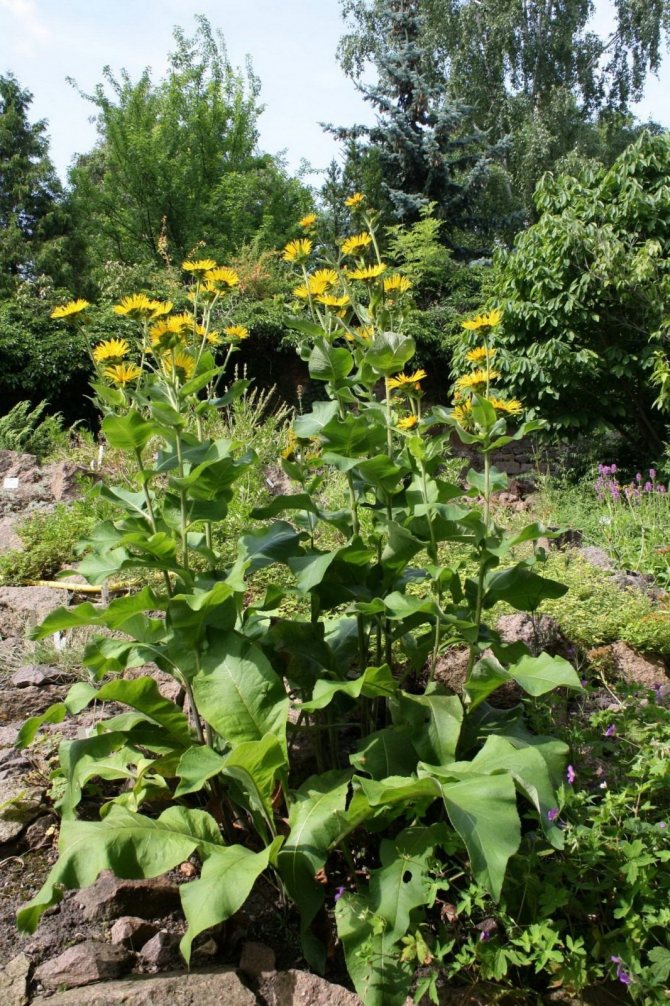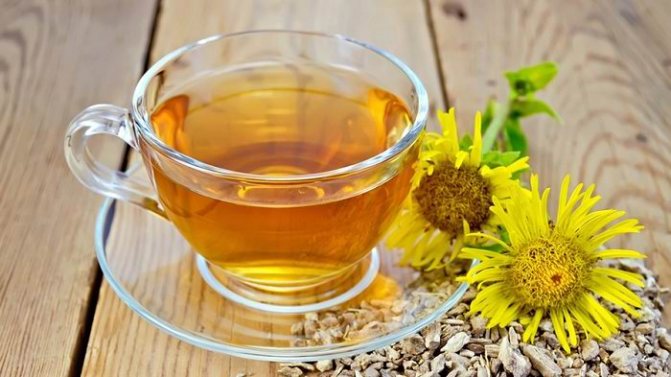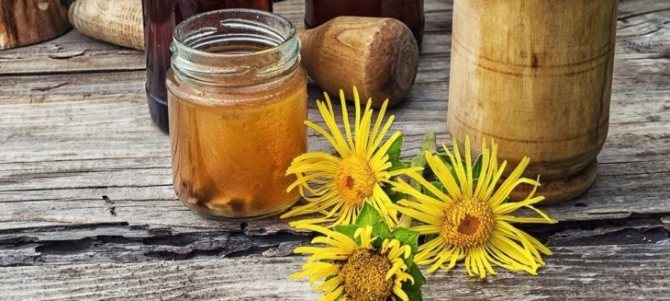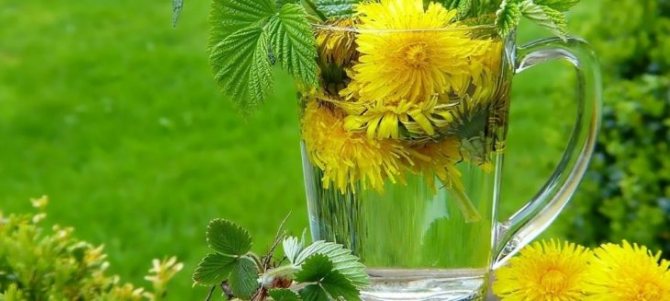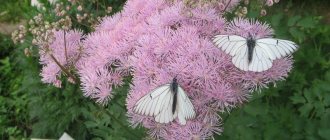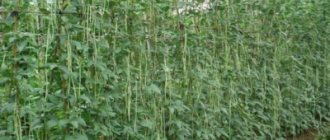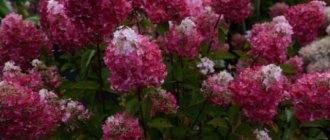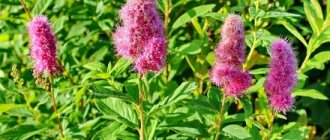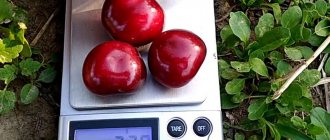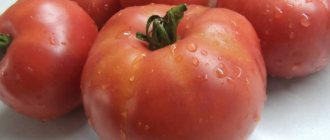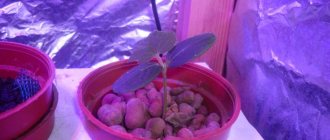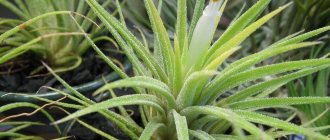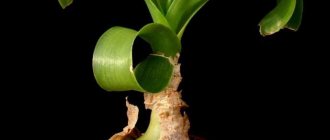Elecampane, description of where and how it grows, photo of the plant
Elecampane tall - a medicinal plant up to one and a half to two meters high, with bright yellow inflorescences, you cannot call it inconspicuous, although it is an unpretentious perennial herb. Grows on the banks of water bodies in forests, meadows, with good moisture. Blooms from July to September.
Elecampane, one of the best medicinal plants in the healing treasury, has long been credited with both medicinal and magical properties. The useful medicinal properties of elecampane for the body are also indicated by its name, which is translated in Latin - cleansing.
Elecampane has rightfully received the recognition of healers all over the world. Plus, in the Slavic countries there is a belief that this plant protects a healthy person from ailments, misfortunes, failures and gives him nine strength.
According to one of the epics, Ilya Muromets managed to get back on his feet after drinking a decoction of elecampane, when he was considered completely hopeless.

Elecampane care
Elecampane grows slowly in the first year, forming a rosette of basal leaves. In autumn, the aerial part dies off and from the second year of life begins to build up a powerful aerial part. Elecampane blooms in the second year. Flowering lasts from July to August. The dark brown seed baskets ripen in September-October. One basket of a three-year-old plant provides up to 5000 seeds, therefore, 1-2 plants are usually left for the seed fund if the crop is grown on medicinal raw materials.
Care consists in maintaining the decorativeness of the flower bed or specimen planting of elecampane. Faded baskets, weeds are removed in a timely manner, and the soil is loosened. Despite the root penetrating deep into the soil, elecampane responds well to watering and loves a constantly moist substrate. In autumn, after the end of flowering, the dead aboveground mass is removed into compost heaps. Elecampane plants, with good care, reach 2 meters in height, and abundant flowering bends the stems to the ground. To preserve the decorative effect of the bush, you need to tie it or tie it to a support. Elecampane plants perfectly tolerate drought and frost, so they do not need shelters. Elecampane is remarkable for its resistance to diseases and pests and does not need protective measures.
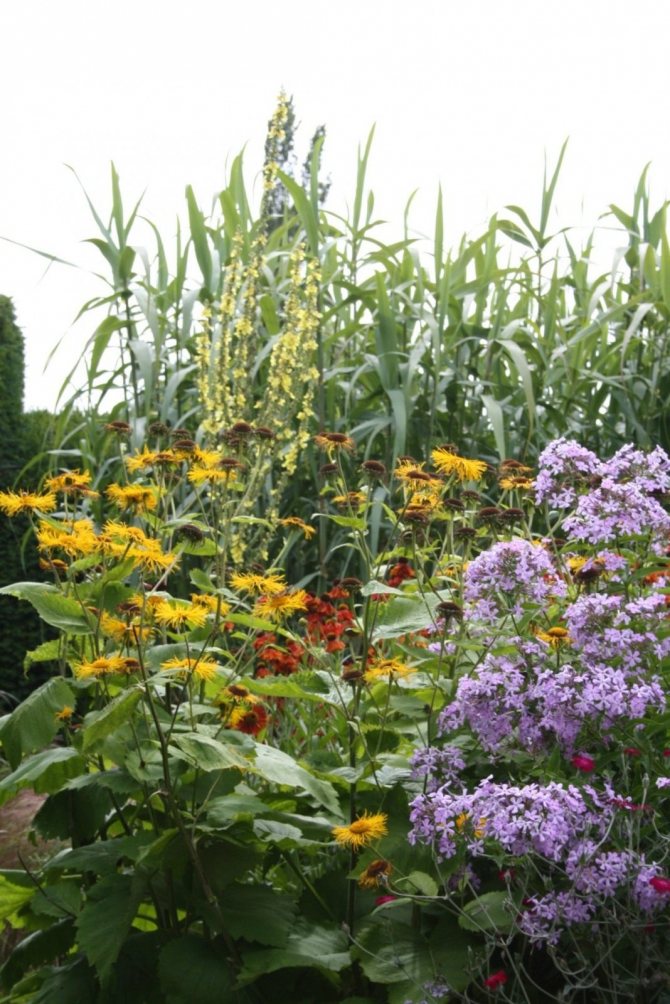

Elecampane in the flower garden.
Elecampane composition and root preparation
The greatest healing power is attributed to traditional medicine. elecampane roots, recognizable by a specific smell, bitter taste and containing a concentrate of useful substances: inulin (up to 45%), pseudoinulin, bitter and mucous substances, characterized by the presence of resins, saponins, folic acid, essential oil (3%).
Rhizomes are harvested in autumn or early spring, washed abundantly with cold water, crushed into pieces 10-20 cm long. Dried in the air for 7-10 days. Shelf life - 3 years. Keep in paper bags in a dry place.
The herb contains essential oil (3%), a large amount of vitamins "E", "C" and carotene. The seeds contain fatty oil (22.8%).
The essential oil of elecampane contains the substance "alantolactone", which has a negative effect on ascaris. because essential oil this plant is a wonderful anthelmintic phyto remedy.
Short description
The herbaceous perennial of the Astrov family surprises with the richness of species - there are almost a hundred of them (and according to some reports, 200)! Attractive large, basket-shaped inflorescences are located singly on the stem, up to 2 meters high. It is not uncommon for nectar collectors to gather in paniculate or corymbose inflorescences. The rhizome is thick and long. Leaves of various shapes: at the root are oval, up to half a meter in length. On the stem - ovoid, pointed, smaller. At the top - lanceolate - sharp and narrow, 6-9 cm.
Flowers in different species differ in shape, structure, as well as gender (there are male and female). The most popular product in medicine is rhizomes and roots. The use of leaves and seeds is not excluded. The herb contains substances from the group of polysaccharides, including inulin (the content in the underground part reaches 44%). When studying the composition, it was determined that the volatile concentrate (alanth essential oil) in the rhizome - up to 4.3%, in the grass - up to 3%.
Healing properties of elecampane
The herb has many properties that serve to improve the functioning of the digestive system, the decoction of the plant is used in the treatment of gastritis, colitis, gastric ulcer and duodenal ulcer, doudenitis, liver and gallbladder diseases, to normalize the metabolic process (for example, in diabetes ).
The roots of the plant are anti-inflammatory, choleretic, diuretic and diaphoretic. Used to treat hemorrhoids, scrofula, dropsy, skin diseases (dermatitis, psoriasis).
Elecampane for cough
Elecampane root for cough - an excellent tool. Preparations from elecampane root have an expectorant, antimicrobial and anti-inflammatory effect, are used for acute and chronic diseases of the respiratory tract (tracheitis, bronchitis, pharyngitis, ARVI).
It is also used in the complex treatment of tuberculosis, pneumonia, whooping cough, bronchial asthma (in the latter case, herbal preparations are used with caution due to the danger of suffocation, since an allergic component is often present in the etiology of asthma).
Sputum under the influence of a decoction of elecampane is very effectively liquefied and removed from the bronchi, breathing is relieved rather quickly, inflammation from the mucous membranes is relieved, coughing and breathing difficulties are reduced. Suitable for both adults and children.
It's easy to prepare elecampane broth for coughing - take a tablespoon of chopped plant roots, pour a glass of boiling water, boil over low heat for 30 minutes, let stand for better extraction, strain and add clean water to the original volume. ...
Drink a glass in parts throughout the day. The same remedy is also used for gargling.
If you recently dug up fresh roots of elecampane, then you can use another folk recipe - washed and peeled from a dark film, twist on a food processor, then squeeze the juice and mix with natural honey in a 1: 1 ratio, take a tablespoon every 2 hours. This delicious recipe will definitely please your coughing child.
If you or your loved ones have a chronic cough, then you can prepare a vodka tincture of elecampane in advance (1 part of crushed raw materials, 10 parts of vodka, leave for a month). Drink 25-30 drops three times a day. Suitable only for the treatment of adults, it is better for children to give decoctions and water infusions.
An excellent means for regulating the disturbed rhythm of the onset of menstruation, the herbal tincture helps with infertility, both female and male.
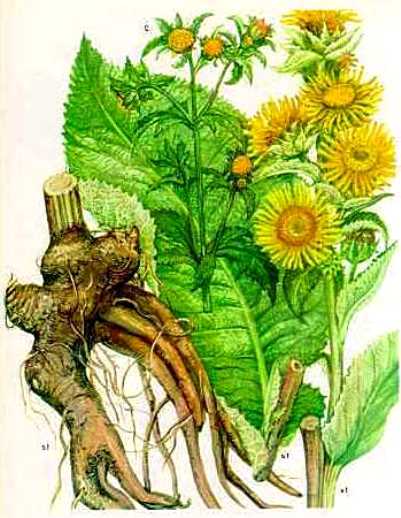

Elecampane in garden design
Since these are perennial plants, the location in the garden landscape is chosen in advance. It looks great in solitary plantings on mown lawns, flower beds. It is used for decoration of parks, forest parks, especially humid places near ponds, small lakes. They are planted along the roads.
For decorative purposes, you can use other types of elecampane: huge or large elecampane, British elecampane, oriental elecampane, magnificent elecampane.
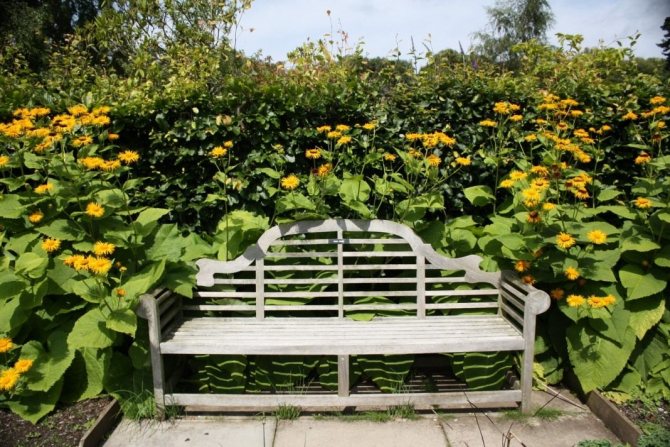

Elecampane gorgeous (Inula mafnifica) in garden design.
The use of elecampane, the root that gives 9 powers, in folk medicine
Roots and rhizomes of elecampane are used in the form of: infusions, broths, ointments, and as an aromatic additive to tea. Let's describe some folk recipes for using elecampane at home.
Infusion of elecampane: finely chopped roots of elecampane - 10 grams are poured in 200 grams of boiling water, infused in a water bath for twenty minutes. Then add boiling water to the original volume. The recommendation for admission - an hour before meals, 100 grams three times a day - as an effective general tonic and, for rinsing the gums, throat with stomatitis, sore throat, pharyngitis.
Decoction of elecampane roots: boil the roots (100 g) in a liter of water for four hours, insist, then filter. It is added to baths, make lotions, compresses for difficult-to-heal dry wounds.
Elecampane Herb Napar: a liter of water is poured into the container, 30 grams of elecampane are poured and simmered all night in the oven. Applied with lethargy of the stomach three times a day, 100 grams.
Elecampane wine: pour a liter of good port or white wine into the container, add chopped fresh root (12 g) and keep on low heat for 10 minutes. Take 50 grams after meals. It is anti-inflammatory, bactericidal, tonic, diuretic, expectorant, hemostatic, choleretic agent.
When treating with elecampane wine, the acidity of the gastric juice increases, therefore its use is contraindicated patients with gastritis, peptic ulcer and during pregnancy, lactation.
A decoction of the roots of elecampane and angelica, in an equal ratio of 15 grams, is placed in a container, poured in cold water and boiled over a small fire for ten minutes. Give instead of tea with severe colds.
Elecampane with honey (powder of a dry root of a plant, ground in a coffee grinder (200 g), mixed with 500 g of fresh honey). Insist 24 hours. Reception - a tablespoon 15 minutes before meals daily, in the morning, lunch and dinner. This remedy is used for cancer of various localization.
Herbal collection, for the preparation of which are mixed in equal parts elecampane, licorice, marshmallow roots. 400 g of water is poured into the container, 10 g of the mixture is put, covered with a lid and insisted overnight. Take 70 grams warm, you can with honey, for allergies (from cold, medication, food)
Mix burdock root and elecampane in equal parts by weight. Ten gr. the mixture is brewed with boiling water - one glass. Insist in the warmth for twenty minutes. Accepted under Art. spoon three times during the day one third of an hour before meals. It can also be used externally as warming compresses for rheumatism.
Another collection for strengthening the immune system is called Nine forces, it includes:
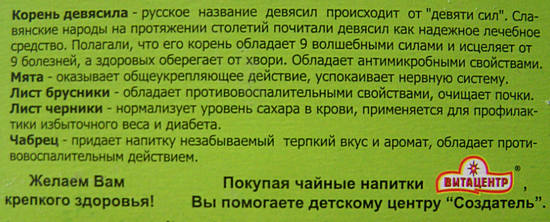

Elecampane root ointment: Take a handful of chopped elecampane roots and 100 grams of unsalted lard. Keep the mixture on low heat for 15 minutes. Strain into a jar. If possible, add pure birch tar and sulfur (2 tablespoons each). 7-10 days to lubricate the areas affected by scabies. For rinsing, use a strong decoction of elecampane (50 grams per liter of water). The scabies disappears quickly.
Elecampane herb for men
The plant is used to increase potency, improve sperm motility and increase their concentration in sperm, in the treatment of male infertility. Elecampane helps to ensure that sperm remain capable of fertilization longer, which significantly increases the chances of conceiving a child.
It helps in the treatment of inflammatory diseases of the genitourinary system, for example, it is used in the treatment of orchitis (inflammation of the testicle) together with propolis, it is used for prostatitis.
Elecampane for women
The question of the medicinal properties and contraindications of elecampane is also relevant for women. The plant helps to get rid of female infertility, when used, normalizes the genitourinary sphere, reduces inflammation and prevents the appearance of adhesions in the small pelvis.
The soreness of menstruation decreases, the cycle stabilizes, and the ovarian capacity is stimulated.
Elecampane is used to stop lactation, breast milk becomes bitter, which contributes to the baby's refusal from the breast, plus, due to the diuretic properties of the plant, the amount of milk decreases and further (after 7-10 days) its production stops.
Also, some women can use the herb (at their own peril and risk due to the danger of uterine bleeding in case of an overdose of the drug) to terminate an unwanted pregnancy.


Rules for collecting and storing herbs
The collection of medicinal raw materials begins in the fall at the time of the appearance of fruits. The dug rhizomes are washed, thin and damaged roots are cut off. The remaining parts are cut lengthwise into pieces and put to dry.
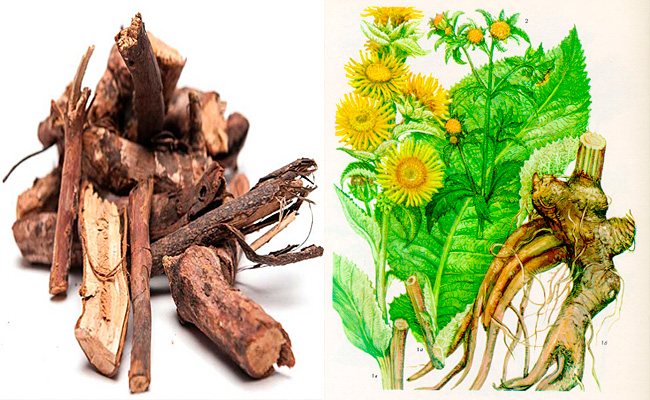

The collection of medicinal raw materials begins in the fall
It continues until the roots break when bent. In order for the nine forces the herb does not lose its medicinal properties, certain rules must be followed.
Note! Store raw materials in a cool dry place and use within 3 years.
An elecampane not only heals diseases, but also decorates any area. A person, admiring it, is relieved of stress. Some people claim that observing the growth and flowering of wild sunflowers has helped them cope with depression.

